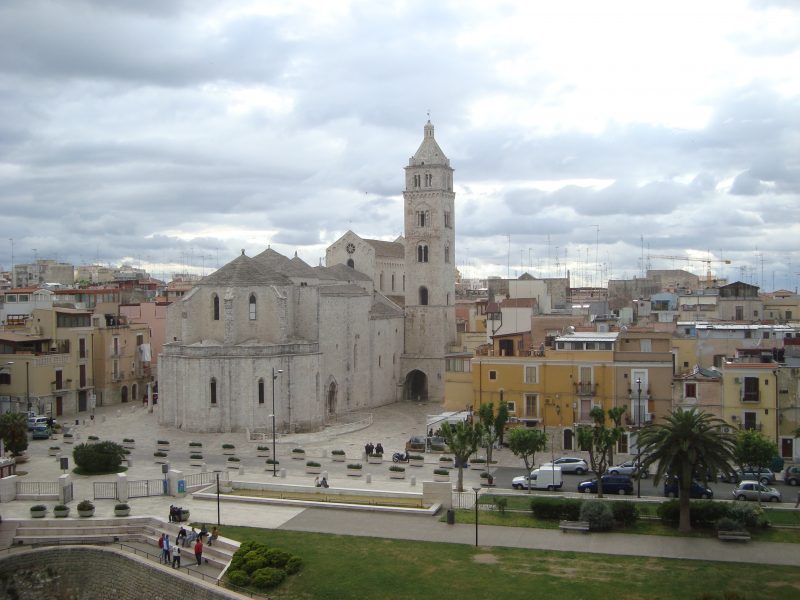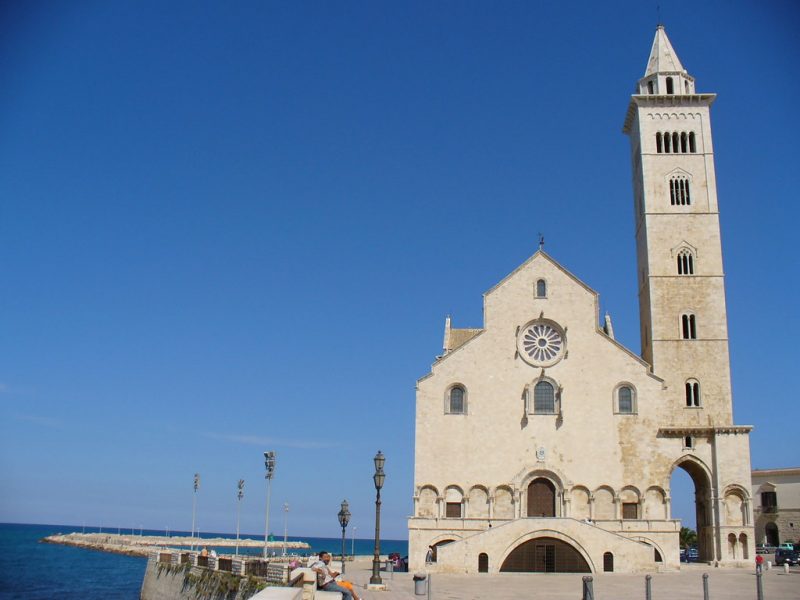The Borgo of Andria
It was no accident that the Holy Roman Emperor Federico II of Swabia decided to construct his most important home near Andria: his beloved “Andria Fidelis” had already bewitched him with its enigmatic charm. The historical center of the little city is a maze of ancient winding streets and tiny lanes, and be careful not to get stuck in the lane of “vicolo” San Bartolomeo, which is only 42 centimeters wide! The locals boast that it is the narrowest street in Italy, and true or not, there is certainly nowhere else like Andria: everywhere you look there are poetic corners and unique architectural details, beautifully carved family crests recount the stories of the noble Medieval families that lived here, and the mystical beauty of the ancient shrines are testament of the authentic faith of the population over the centuries.
Of all the wonders in Andria, one reigns supreme: the magnificent Castel del Monte, which for centuries has fascinated the world with its legendary mysteries. Emperor Federico II, also known as the Puer Apuliae (Son of Puglia) had the castle built as a symbol of perfection, constructing it here in the city that he loved, and it is not difficult to understand his fascination for this splendid borgo.
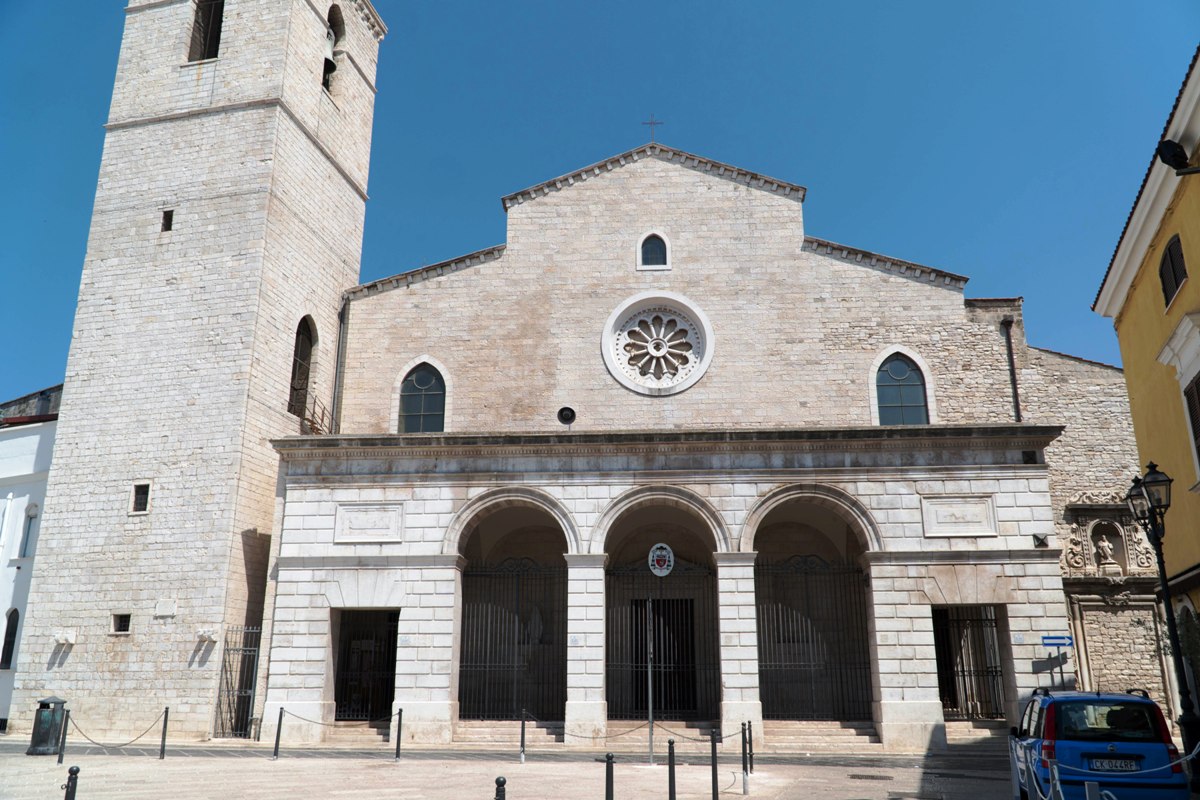
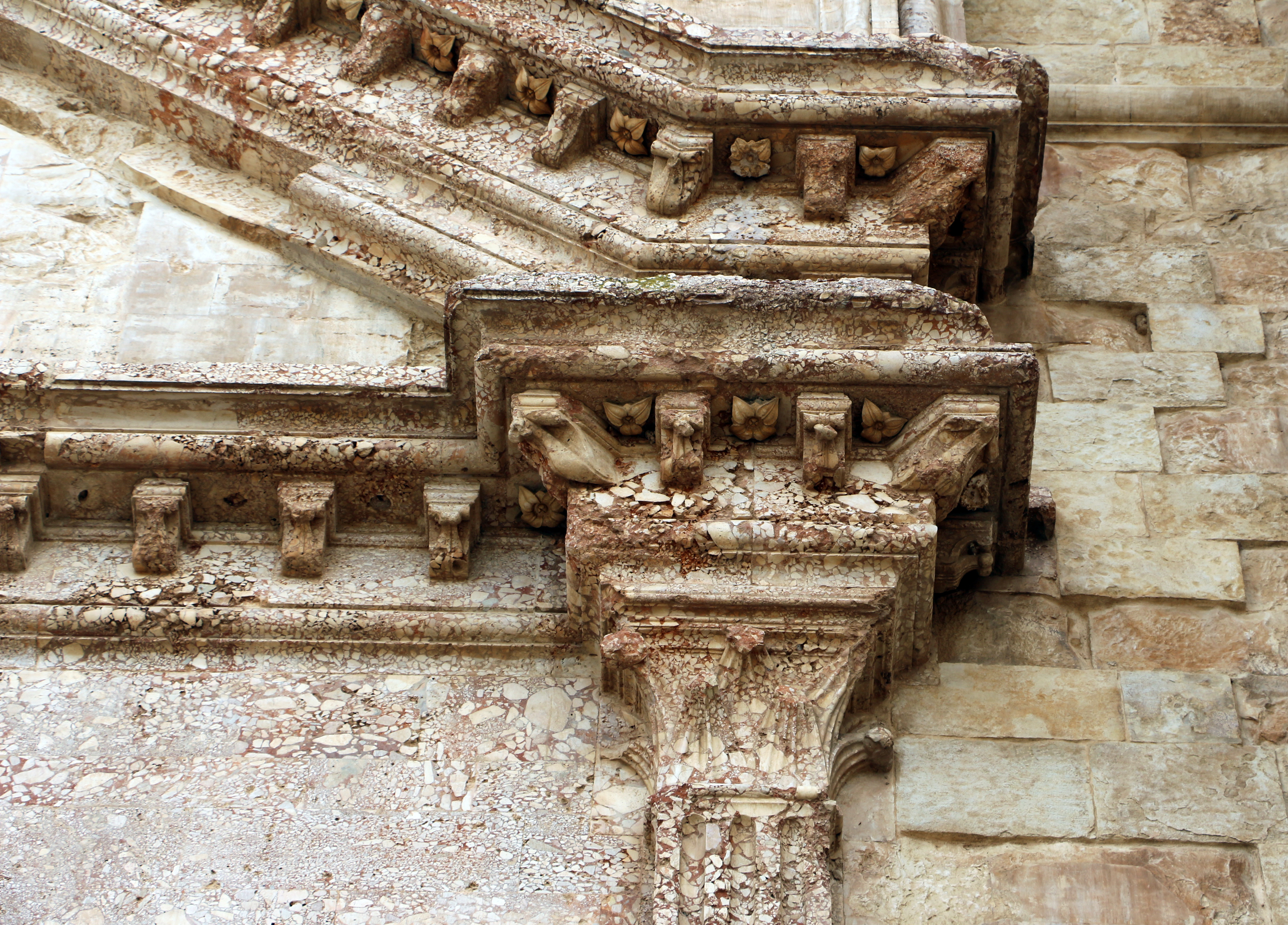
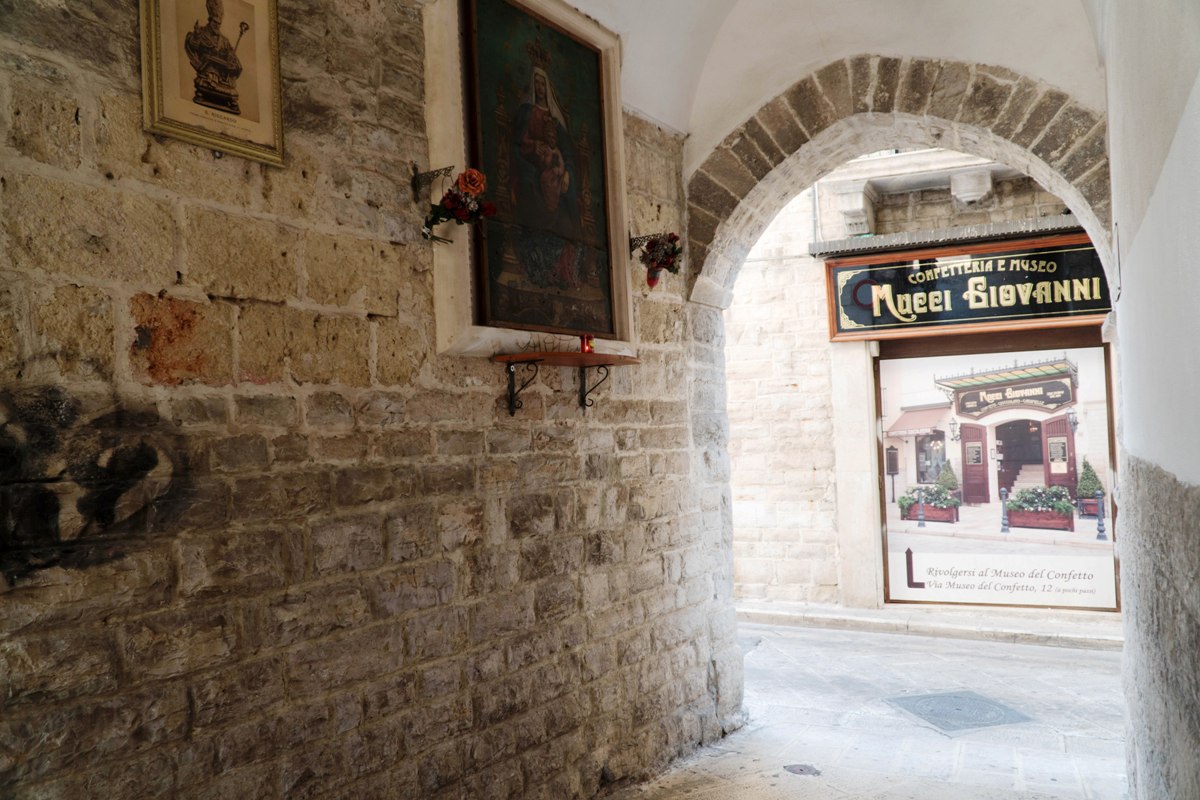
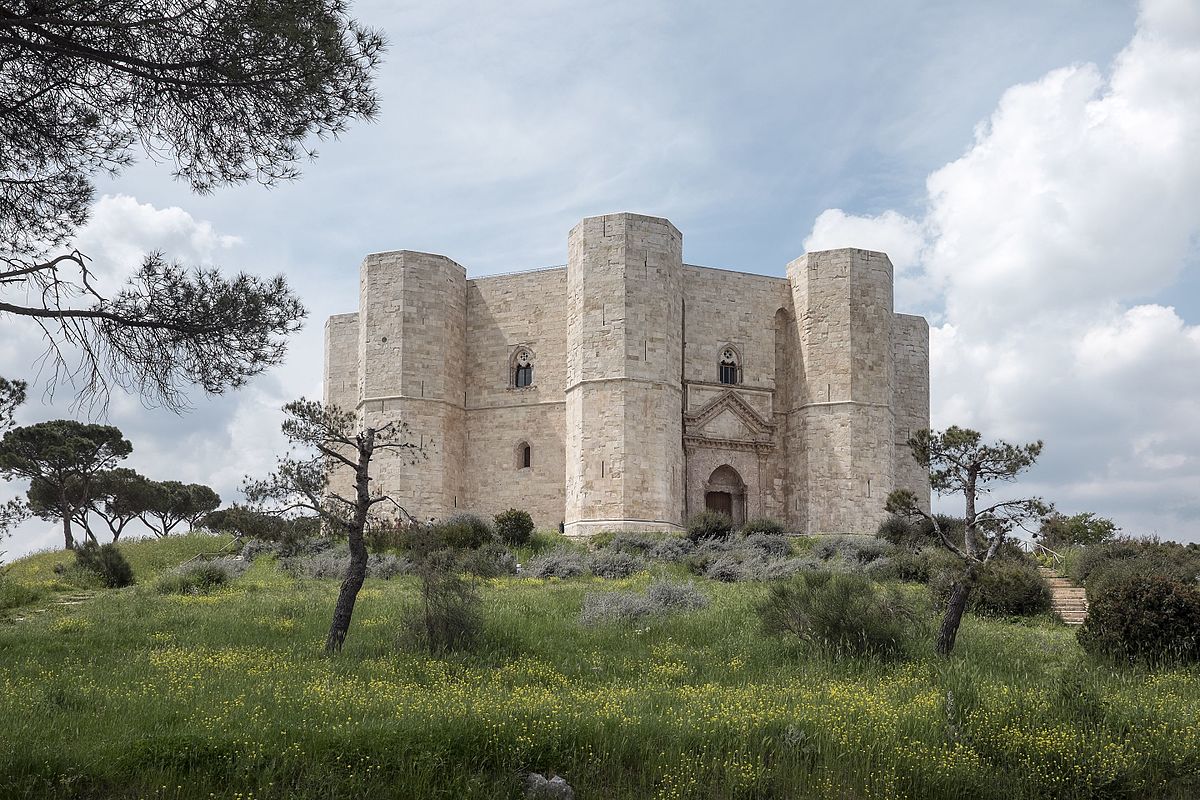
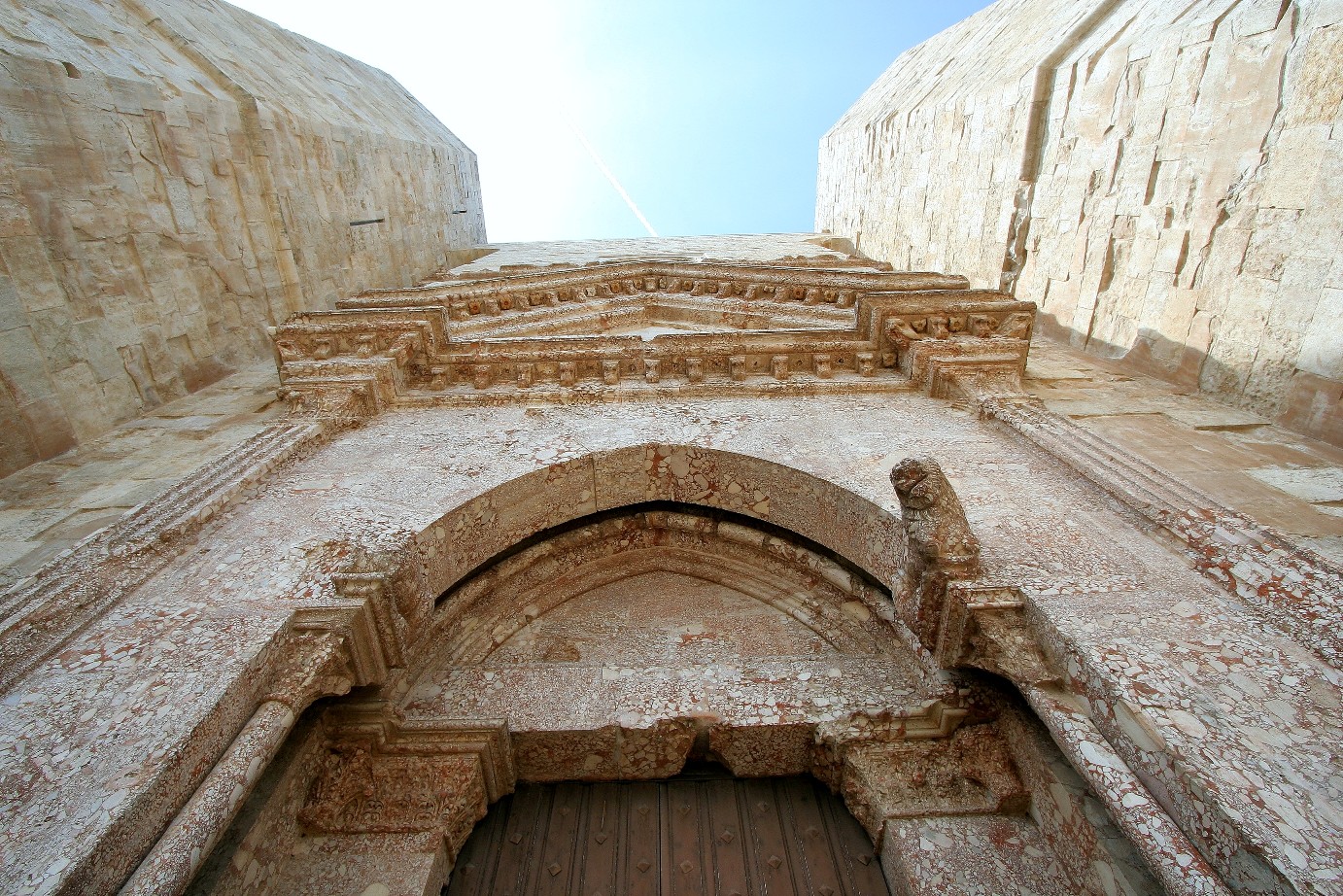
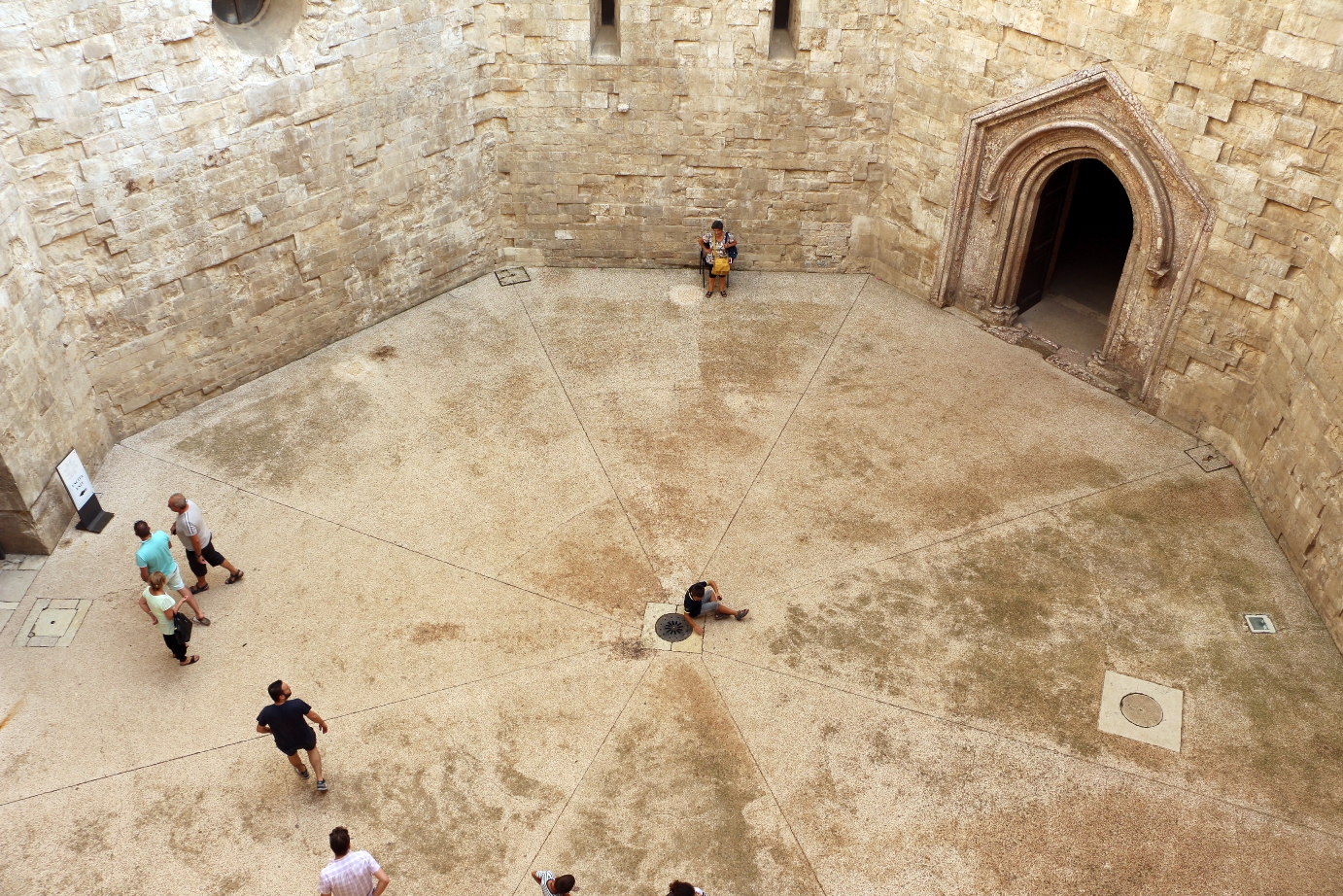
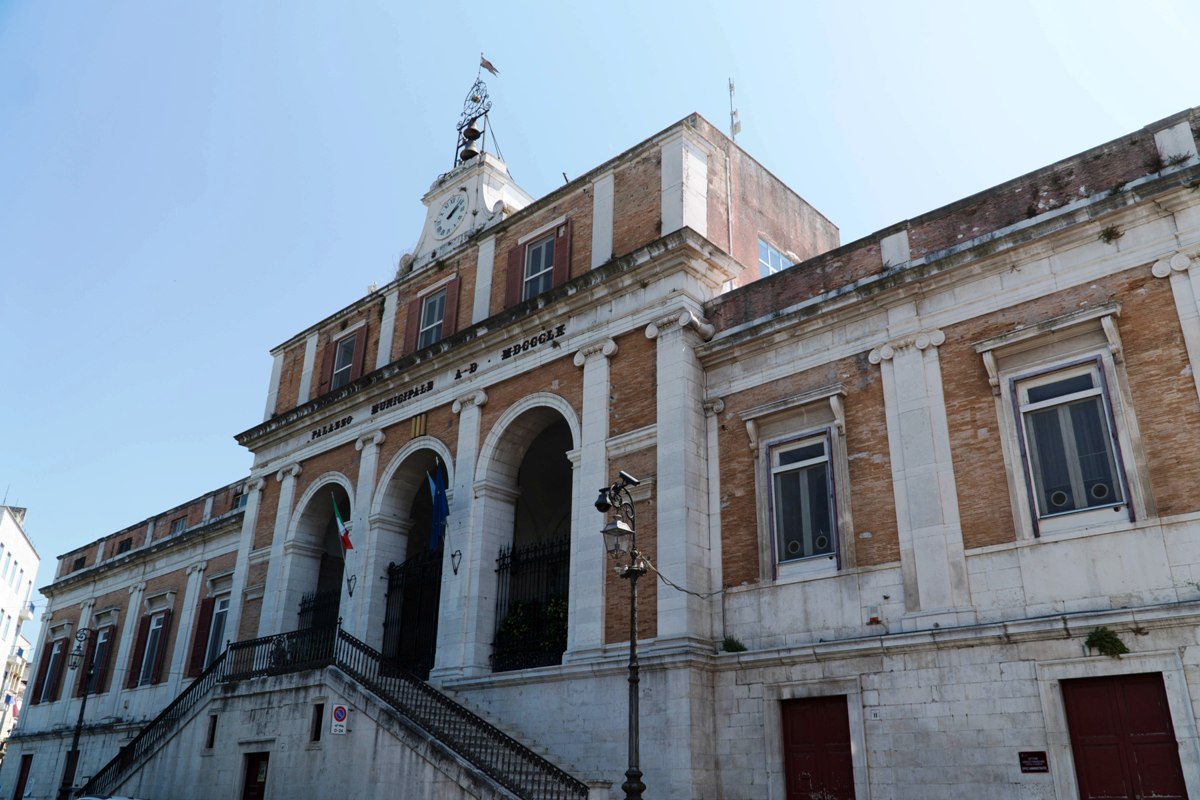
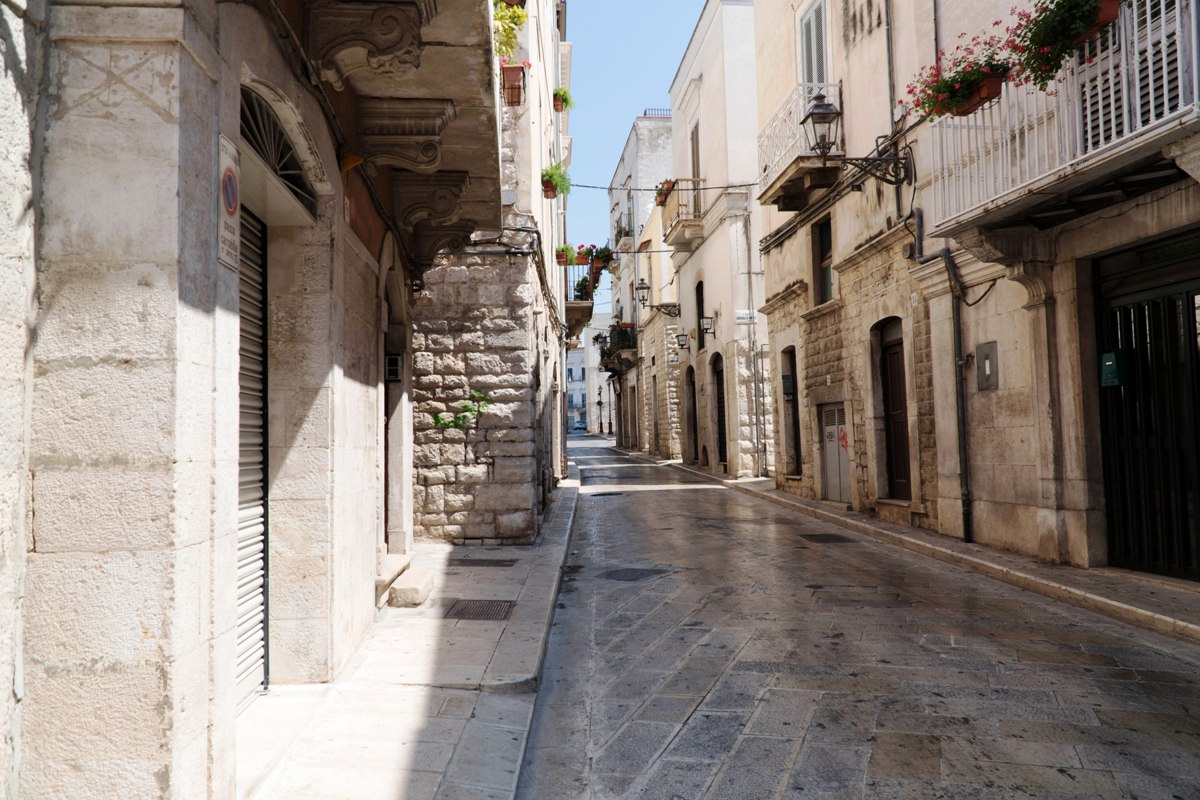
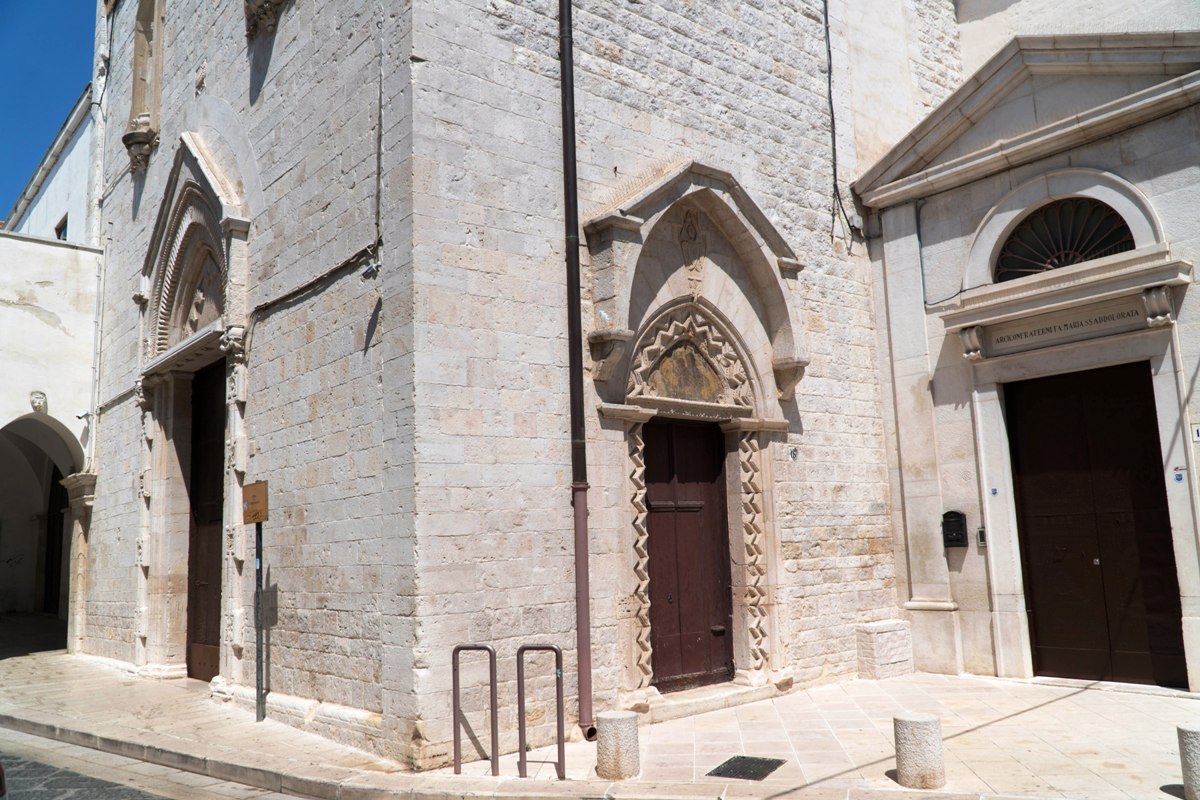

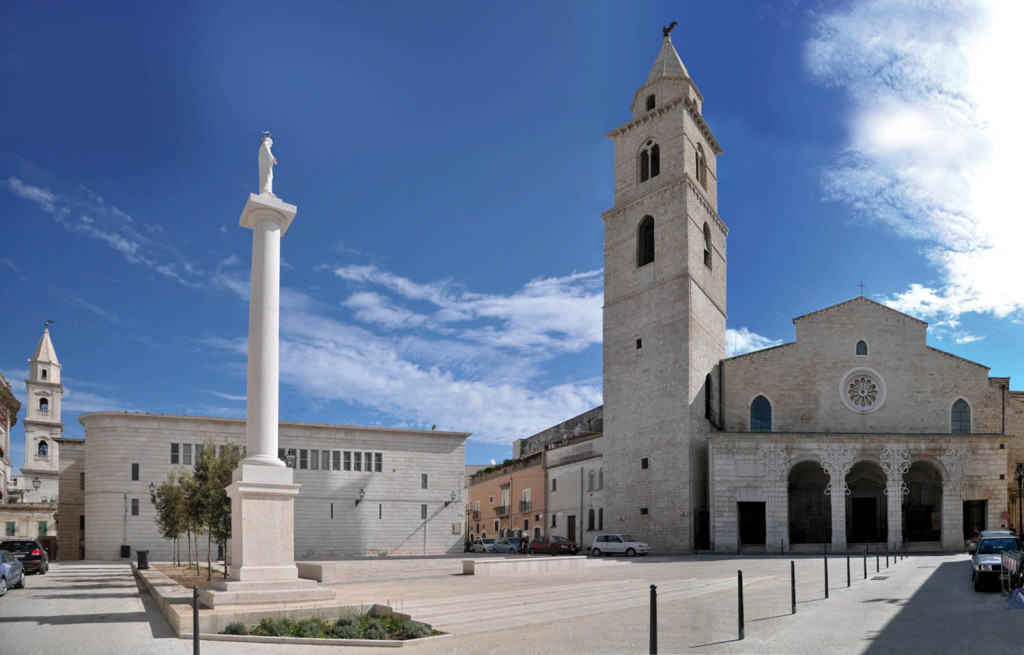











History
Andria is the most important city in this territory known as “Puglia Imperiale”. Puglia Imperiale is a tapestry of myth and legend, knights and crusades, and above all castles, castles, and more castles, the magnificent heritage left to this land by the Emperor Federico II of Swabia.
The origins of the borgo are immersed in controversy and veiled in mysticism. Legend has it that its foundation dates back to around 100 A.D., when St. Andrew, Sant Andrea, sought refuge in the Karst stone caverns of this area when he was ill, hence causing it to be named Andreia. The first official documents of its existence however, were issued at a much later date, in 1046, when Peter I of the Normans elevated Andria to the status of a fortified city. Later, in the twelfth century, Andria became definitively linked to the Swabian dynasty, and above all to the Puer Apuliae (Son of Puglia), the Holy Roman Emperor Federico II, who chose to build his most magnificent and unique castle here: Castel del Monte.
In 1266 Andria was proclaimed a county and passed into the hands of the Angevin rulers.
During the Neapolitan Revolution, Andria openly defended the ruling Bourbon dynasty, which led it to be sacked and set aflame. The French ruler, Joachim Murat governed the city for a short time, leaving a fundamental contribution by abolishing feudal rule and confiscating the ecclesial wealth of the Church.
During the struggle for the Unification of Italy, Andria sided once more with the royalists in defense of the Kingdom of the Two Sicilies, making it prey to constant attacks by the “briganti” (revolutionaries fighting for a unified nation). Regardless, Andria was also home to many liberal patriots, and even Garibaldi himself (the national leader of the movement) was elected as a deputy of Andria in the first Parliament in the Kingdom of Italy.
Andria is primarily an agricultural city, which, in 1900, led its many farm workers to take part in the uprisings against the landowners and the inhuman working conditions they imposed. The struggle of the farmers intensified even more during the twenty years under fascism and all through the Second World War.
Agriculture has remained the central economic driver of the city, and today Andria is one of the most populated cities in Puglia, elevating it to the title of Province, a role it shares with the neighboring cities of Barletta and Trani, creating a province known as B.A.T.(Barletta, Andria, Trani).
Castel del Monte
Federico II of Swabia took his throne at an age when children today are still playing with nursery toys, at barely three years old. For his entire life he fascinated and inspired the world with the cosmopolitan acumen of his intellectual, philosophical, political, educational and architectural pursuits, the width and breadth of his multicultural vision leading him to be known, even today, as the “stupor mundi” (He who stupefies the world).
The Swabian Emperor was deeply in love with the territory of Puglia, and showered it with gifts of his most precious jewels, not diamonds and crowns of gold, but marvelous castles and proud fortresses, which brought luster and glory to the towns and “borghi” under his protection. Of all the wonderful constructions of the Puer Apuliae (the Son of Puglia), the most important by far is Castel del Monte of Andria, which over time has become the symbol of the entire region. Every year it attracts countless visitors, drawn by the veil of mystery and legend that has always surrounded it.
The castle’s unique octogonal form was designed with mathematical rigor, resulting in an architectural form that creates infinite symbolic possibilities, all interlinked with the number eight: eight rooms on the ground floor, eight rooms on the first floor, and eight octagonal towers surrounding it. These unique elements have inspired countless beliefs and hypotheses which have increased the fascination and popularity of this singular masterpiece over the centuries.
Some believe it was a school for advanced scientific studies, others hypothesize that it was a mystical center for secret initiations. Some think it was created as a secular temple, and still others are convinced that it was a place to raise and train eagles. The only thing we know for certain is that the truth regarding the castle’s original purpose is remains a complete mystery. There is one indisputabile fact: the structure of the castle was mathematically designed to create specific plays of light during the bi-annual events of the Solstice and the Equinox, an amazing spectacle to behold.
The castle is solid and compact, thanks to the use of limestone mixed with quartz, while its triumphant arched entryway is made of crushed coral. All that remains of the ancient decorative elements in the interior are mosaics and marble embellishments. The external walls are characterized by continual intervals of arched windows, single arched on the ground floor, and double arched on the first floor. There is only one exception, found in the triple arched window that faces out to Andria, a demonstration of the love Federico II had for the city, which he baptized: Andria Fidelis.
Castel del Monte, in all its glorious majesty, has been a UNESCO World Heritage sight since 1996.
The Cathedral of Santa Maria Assunta
The present Cathedral of Andria is built over the base an ancient church dedicated to St. Peter, constructed in the year 1000 A.D., which was later used as the crypt for successive religious structures.
The cathedral was constructed in the twelfth century, commissioned by an important citizen of Andria, Signore Goffredo D’Altavilla. Over the centuries it underwent numerous important remodeling interventions, particularly in the 1600’s, and then at the beginning of the 1900’s, when the current façade and the main entrance were created.
The façade was constructed in two phases, the lower part with a colonnade and rounded arches in 1844, while the upper section, with a Romanic influence and a central rose window, was created in 1900.
The bell tower is built on a square base dating back to the Lombard era.
The interior has three naves and ten chapels running along the perimeter, reopened only after a recent restoration in 2008. One of the chapels, the “Cappella della Spina”, leads to the crypt below, a fascinating Paleo-Christian church with an intimate and mystical atmosphere.
Andria, the Rupestrian Churches and early Christianity.
Not far from Andria’s historical center there is a small church with an intriguing and mystical soul: the Church of Santa Maria dei Miracoli (St. Mary of the Miracles).
The church is divided into three levels. The underground crypt is extremely ancient, with an atmosphere of intense spirituality and devotion typical of the very first Christian places of worship, while the upper portion is graced with a primarily Rennaissance charm.
The central element of the crypt is a Paleo-Christian fresco of the Madonna and child, surrounded by an aura of mystery which over the ages has generated myths and Medieval legends. At a slightly higher level there is the Chapel of the Crocefisso (Crucifix), full of frescos depicting the Passion of Christ as well as Sybil and the Prophets. The upper church is more recent, and is decorated with frescos that run the length of the walls.
The Rupestrian church of Santa Croce (Holy Cross) has one part carved directly in tufaceous lime-stone bedrock, and the other part composed of tufa-block walls. One part is decorated with Byzantine frescos, and the other part has a section of the wall covered with a fresco recounting the legend of Elena, the mother othe Emperor Constantine, who was purported to have discovered the wood of Christ’s cross, hence the name of this tiny church. This fresco leads to other frescos going progressively back in time until the biblical scenes depicting the Original Sin.
The Confetto Museum
In Italy, these special candies have accompanied the ceremonies and important events of every Italian’s lifetime, faithful and timeless after-dinner sweets,“Confetti” are lovingly distributed on occasions such as weddings or the birth of a child, to name a few. Adored by the young and old alike, today they can be found in infinite flavours and variations, always maintaining their classic almond shape. In the past, they were simply made from almonds covered with an opaque sugar glaze, and were commonly found in Puglia, one of the regions where “confetti” has been traditionally produced. One of the most important families in this long tradition is the Mucci family of Andria, who, with creativity and long-term vision, have been producing these delicious sweets since 1894, and today have transformed their original ancient factory into a museum, the “Museo del Confetto”. Located in a small Liberty (similar to Art Nouveau) style building, the museum has four rooms, where you can admire the instruments and the manufacturing techniques used to concoct the specialties of this family business. The fourth room is surely the most popular with visitors, the tasting room, where you can sample candies, “confetti”, and also exquisite chocolate.
The narrowest street in Italy, perhaps…
The ancient stone streets and lanes are the very soul of Andria’s historical center, each with its own unique beauty and characteristic charm. For years, one of these particular characteristics has stoked the fires of hot debate: which town has narrowest street in Italy. The citizens of Andria passionately maintain that their “Vicolo San Bartolomeo” is the narrowest, despite the fact that the “Vicolo della Virilità” (Virility Lane) in the Marche region has been awarded the title in the Guiness Book of World Records. The difference between the two contestants is slightly less than a centimeter: Vicolo San Bartolomeo is slightly larger at the entrance but it narrows after a few meters. In several points this characteristic street is formed by the original walls of the ancient nucleous of the borgo, even though all eight meters are now almost completely covered by graffitti. Narrowest or not, this fascinating ancient lane in the historical center of Andria certainly merits a visit and a commemorative photo of this one-of-a-kind location.
Imperial Burial
The crypt below the Cathedral of Andria has a mystical atmosphere of stark and ancient beauty, with cross-arched ceilings and bare columns. This simple Medieval church is the custodian of not one, but two Empresses. Isabelle of England and Yolanda de Brienne of Jerusalem were buried here, both wives of the Holy Roman Emperor, Federico II.
The circumstances regarding these two noblewomen remain controversial and unresolved: both were wed to the Emperor to further his diplomatic and political concerns, and still today, there are some who maintain that both were poisoned to death. Since Medieval times, there was a popular legend that the two Empresses were buried in the mausoleum, which is located at the entrance of the Cathedral. In search of historical truth, their tombs were opened for the first time, to find a surprising total of nine bodies inside, some of them impossible to identify by age or sex. For some time, results remained piecemeal and uncertain. Finally, in the early 1890’s, further studies ascertained that out of the nine people exhumed, two were certainly women. In the first case, the woman had died between the age of twenty five and thirty five, and was highly likely to be Isabelle of England, who died in childbirth at twenty seven. The second case was a girl who had died between the age of twelve and eighteen, probably Yolanda de Brienne of Jerusalem, who died when she was sixteen, a few days after giving birth to her son Corrado.
In the Middle Ages it was not unusual to bury more than one person in a tomb, what is unprecedented however, is that among all those unidentified bones there were also the remains of two important Empresses.
Lino Banfi
In Italy, there is a family television series that has been running since 1998 called “Un Medico in Famiglia” (A Doctor in the Family), and the role of “Grandpa Libero” played by Lino Banfi is
one of the best known television characters in Italy, loved by young and old alike.
Lino Banfi was born as Pasquale Zagaria in Andria on the 11th of July in 1936, and his family moved to Canosa di Puglia when he was three years old. Pasquale began by performing in the town fairs and festivals, and at eighteen moved to Milan, where he broke into the comedy variety show circuit by telling jokes and playing entertaining stereotypes from the Puglia region. Still today, his typical sayings and vernacular from the north of Puglia have remained his trademarks as an actor.
The libertine sixties were the springboard for his film career, which continued to flourish in the seventies and eighties. Together with Gianfranco D’Angelo, Alvaro Vitali, Edwige Fenech, Gloria Guida and others, Lino Banfi was one of the key protagonists in a film genre called “commedia sexy”, a type of Italian slapstick-softcore-comedy (think “The Three Stooges in the Land of Full-frontals/semi-nude secretaries/girls next door/boss’s wife ect.”). Continuing with his endearing characterizations of northern Puglia, he starred in standard comedies for television and film and played Commissioner Zagaria in a television detective series.
The eighties were the decade of his most famous films: “Vieni avanti cretino” (Come forward idiot) (1982), “Occhio, malocchio, prezzemolo e finocchio” (Eye for evil eye, parsley and fennel) (1983) and “L’allenatore nel pallone” (The football coach) (1984).
In the next phase of his career he hosted television variety shows (such as “Stasera Lino” in 1989), until 1998, when he joined the cast of “Un Medico in Famiglia”, abandoning his other roles of the moment to take on the comforting guise of the wise and funny Libero Martini, the lovable grandfather of a large and rambunctious family.
He also continued to work in film and in 2007, starred in the sequel “L’allentatore nel pallone 2”, reappearing as the beloved Oronzo Canà.
While his artistic career has been eclectic and versatile, in his personal life he has been happily married for more than fifty years. He and his wife Lucia have two children, Walter and Rosanna, who has followed in her father’s footsteps as an actress.
Do you know typical recipes of this borgo? Contact us!

 Italiano
Italiano
 Deutsch
Deutsch

